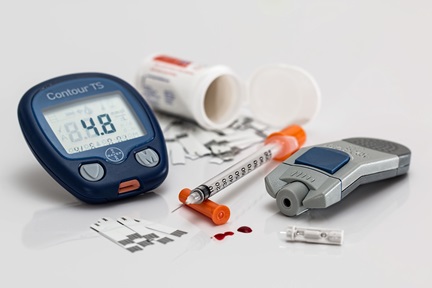New way to make sulphur-based medicines
The method could also improve existing drugs.

(From left) Graduate student Yang Ziqi, Prof Tan Choon Hong', researcher Dr Kee Choon Wee and graduate student Esther Ang from NTU used a newly developed catalyst for their drug synthesis method. Credit: NTU.
Pharmacophores are vital parts of a drug molecule that interact with biological targets to treat illnesses. Some pharmacophores containing sulphur groups are chiral, meaning they exist in two versions that are structurally mirror images of each other.
Current methods to synthesise sulphurbased pharmacophores involve creating a mixture containing both chiral forms of the pharmacophore, rather than just one.
This can pose problems as some chiral forms of a molecule are toxic. If a mixture containing the toxic and non-toxic chiral molecules is used to treat patients, it can cause unintended side effects.
In a breakthrough, NTU scientists led by Prof Tan Choon Hong from the School of Chemistry, Chemical Engineering and Biotechnology have developed a new method that overcomes this hurdle by creating potential sulphur pharmacophores in only one chiral form.
The new method involves a process called asymmetric synthesis, in which a sulphur compound is added to the organic compound acyl chloride and reacted with an alcohol compound. To speed up the reaction, a new catalyst developed by the scientists called pentanidium is used.
This approach also allows pharmacophores with different sulphur groups to be added to existing drugs to create new therapeutic options.
Taken together, this broadens the variety of compounds that scientists can produce and screen as potential drug candidates for treating illnesses, speeding up the drug discovery process.
“In the future, we hope that our method can improve existing drugs or allow new therapies to be developed without starting from scratch,” says Prof Tan.
---
Details of the research can be found in “Synthesis of chiral sulfinate esters by asymmetric condensation”, published in Nature (2022), DOI: 10.1038/s41586-022-04524-4.
The article appeared first in NTU's research & innovation magazine Pushing Frontiers (issue #21, December 2022).



.tmb-listing.jpg?Culture=en&sfvrsn=a0428bd8_1)
.tmb-listing.jpg?Culture=en&sfvrsn=b5366f51_1)


